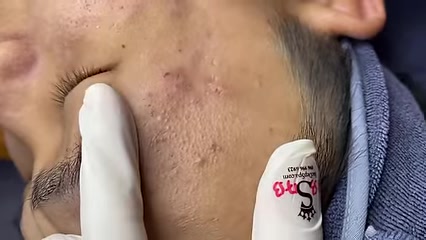Historically, blackhead removal was approached with a mix of herbal remedies and physical interventions. Ancient Egyptians used oils and creams made from natural ingredients, while traditional Chinese medicine employed acupuncture and herbal poultices to address skin issues. However, the hands-on methods, particularly involving tools, often led to the more drastic techniques of extraction.
The bent needle technique can be traced back to various cultures that relied on rudimentary tools for skincare. A bent needle, often improvised from a sewing needle or a similar implement, served as a makeshift extractor. The user would carefully heat the needle to sterilize it—a critical step in any procedure that risks infection. This method, while effective in some respects, was far from clean and could lead to complications if not executed with precision.
The process was meticulous and, frankly, rather unpleasant. First, the skin around the blackhead needed to be prepared. Users often applied steam or hot compresses to the area to open up the pores, making extraction easier. This step was crucial, as attempting to remove blackheads from closed pores could lead to scarring or infection. Once the skin was adequately prepared, the real work began.
Using the bent needle, the user would gently pierce the skin around the blackhead. This initial puncture was meant to create a small opening, allowing the user to apply pressure around the blackhead itself. As the needle was angled just right, it would help dislodge the sebum clogging the pore. While some people managed to master this technique, many found themselves in a painful battle—wincing as they pressed down too hard, risking deeper penetration than intended.
The process could easily become messy, with blood and pus sometimes involved, depending on the severity of the blockage. Many who undertook this method reported a sense of satisfaction upon successfully extracting a blackhead, albeit often followed by regret and irritation from the surrounding skin. The combination of discomfort and the potential for scarring made this approach a gamble, yet it persisted as a popular choice among those desperate for clear skin.
Despite its gruesome nature, the bent needle method highlights a significant aspect of human behavior: the lengths we go to for beauty. Even today, with advanced dermatological treatments available, many still seek immediate solutions, sometimes resorting to questionable practices at home. The desire for clear skin transcends time, revealing a universal human experience that ties us to our ancestors.
As we continue to evolve in our understanding of skincare, the historical methods remind us of the journey we’ve taken. The bent needle technique may seem barbaric by today’s standards, but it serves as a testament to the human spirit—our relentless pursuit of perfection, even if it means enduring a little pain along the way. In the end, it’s a reminder that while technology advances, the quest for beauty remains a deeply rooted part of our existence
